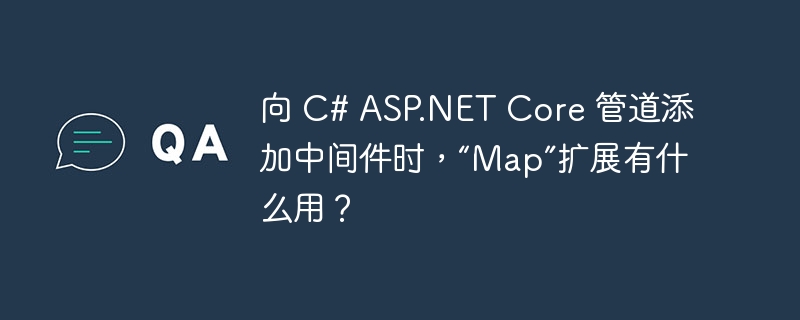

Middleware is a software component assembled into an application pipeline Handle requests and responses.
Each component chooses whether to pass the request to the next component pipeline and can perform certain operations before and after the next component Called in the pipeline.
Map extensions are used as conventions for pipeline branches.
Map extension method is used to match request delegates based on the requested delegate. path.Map simply accepts a path and a function to configure the individual middleware pipeline.
In the example below, any request with a base path of /maptest will be processed Through the pipeline configured in the HandleMapTest method.
private static void HandleMapTest(IApplicationBuilder app){
app.Run(async context =>{
await context.Response.WriteAsync("Map Test Successful");
});
}
public void ConfigureMapping(IApplicationBuilder app){
app.Map("/maptest", HandleMapTest);
}In addition to path-based mapping, the MapWhen method also supports predicate-based mapping.
Middleware forking that allows building separate pipelines with great flexibility fashion.Any predicate of type Func
private static void HandleBranch(IApplicationBuilder app){
app.Run(async context =>{
await context.Response.WriteAsync("Branch used.");
});
}
public void ConfigureMapWhen(IApplicationBuilder app){
app.MapWhen(context => {
return context.Request.Query.ContainsKey("branch");
}, HandleBranch);
app.Run(async context =>{
await context.Response.WriteAsync("Hello from " + _environment);
});
}Map can also be nested
app.Map("/level1", level1App => {
level1App.Map("/level2a", level2AApp => {
// "/level1/level2a"
//...
});
level1App.Map("/level2b", level2BApp => {
// "/level1/level2b"
//...
});
});The above is the detailed content of What is the use of the 'Map' extension when adding middleware to a C# ASP.NET Core pipeline?. For more information, please follow other related articles on the PHP Chinese website!
 What are the Chinese programming languages?
What are the Chinese programming languages?
 Java-based audio processing methods and practices
Java-based audio processing methods and practices
 How to display html in the center
How to display html in the center
 What are the microcontroller programming software?
What are the microcontroller programming software?
 How to get the input number in java
How to get the input number in java
 How to delete a file in linux
How to delete a file in linux
 Python thread pool and its principles and uses
Python thread pool and its principles and uses
 Solution to the problem that win7 system cannot start
Solution to the problem that win7 system cannot start
 js method to get array length
js method to get array length




